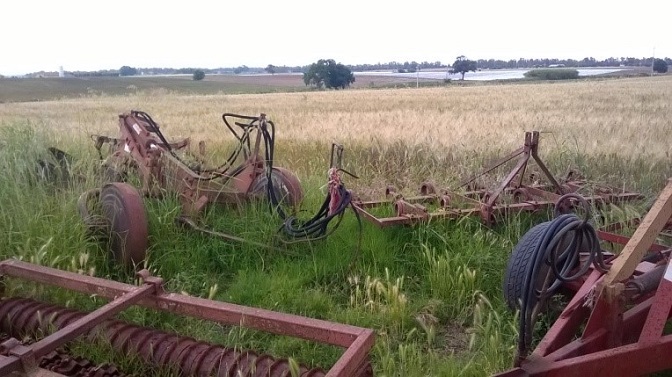Name of Pilot Area: Piana di Tarquinia
Country: Italy
Region: Piana di Tarquinia (Lazio)
Climate type: Dry-sub humid
Average annual rainfall: Around 670 mm
Average annual ET: Around 1,900 mm
Challenges: Italian intensive agriculture production area, groundwater pollution problems, identified as nitrates vulnerable zone from agricultural sources by the Lazio region. High energy costs of water pumping on irrigation network
User(s): Farmers and their association (Consorzio di Bonifica Maremma Etrusca); Regional environment protection agency; Central government (INEA)
Pilot focus: EO-based VRT; soil organic matter restoration; energy-water-food
Current situation:
The Italian pilot area, “Piana di Tarquinia”, is located inside the “Maremma Etrusca” Water User Associations, near the city of Tarquinia, in the Lazio Region, less than 90km from Rome.
It’s a plain area characterized by tourism and agriculture activities. The Etruscan cemetery of Tarquinia is an UNESCO World Heritage list from 2004; the agriculture of the area is intensive and various with a range of irrigated and rainfed productions mainly tomatoes, vegetables, durum wheat, vineyard.
For irrigated production, the Marta river is the main source of water, strongly regulated through a network of channels and dams designed to guarantee water supply. Better irrigation and nutrient efficiency is however necessary to improve farming system profitability, overcome pressures on resources and preserve environmental and water quality in aquifers.
The typical problems of the area are due to groundwater pollution and water management. Both in quality than in quantity perspective. As a matter of fact the area has been identified as nitrates vulnerable zone (EU Nitrates). Other problems reported by local farmers is the uncertainty for the future, the high production costs and the fear that a agricultural activity would not be adopted by young people.
FATIMA project will tackle these problems by providing fertilizer and water management recommendation to both farmers and institutional stakeholders.


 Morbi porttitor congue felis, a placerat risus finibus et. Vestibulum sollicitudin et risus ut posuere. Quisque mauris elit, mollis nec gravida nec, vehicula ut purus. Sed sodales ipsum vitae mauris efficitur, vel facilisis dui pharetra. Donec ipsum erat, tincidunt vestibulum felis nec, blandit commodo orci. Praesent volutpat lorem ac ex aliquet faucibus. Nam varius vel sapien vitae posuere. Vestibulum luctus facilisis felis nec sodales. Aenean sed tempus arcu. Aliquam fringilla lacus non felis consequat consequat. Mauris purus lectus, luctus at dolor vel, volutpat sodales lorem. Donec congue euismod interdum. Aenean nec convallis sem.
Morbi porttitor congue felis, a placerat risus finibus et. Vestibulum sollicitudin et risus ut posuere. Quisque mauris elit, mollis nec gravida nec, vehicula ut purus. Sed sodales ipsum vitae mauris efficitur, vel facilisis dui pharetra. Donec ipsum erat, tincidunt vestibulum felis nec, blandit commodo orci. Praesent volutpat lorem ac ex aliquet faucibus. Nam varius vel sapien vitae posuere. Vestibulum luctus facilisis felis nec sodales. Aenean sed tempus arcu. Aliquam fringilla lacus non felis consequat consequat. Mauris purus lectus, luctus at dolor vel, volutpat sodales lorem. Donec congue euismod interdum. Aenean nec convallis sem. Lorem ipsum dolor sit amet, consectetur adipiscing elit. Phasellus a nibh at sapien commodo laoreet. Phasellus ut ex dignissim, luctus nibh eget, tincidunt lacus. Nulla vestibulum scelerisque purus non semper. Curabitur id enim vitae dolor sodales molestie nec quis risus. Vestibulum rhoncus tellus nec tortor tincidunt, a bibendum enim tempus. Mauris id lectus in odio dapibus faucibus. Quisque mollis pretium diam, non mattis lorem consequat non.
Lorem ipsum dolor sit amet, consectetur adipiscing elit. Phasellus a nibh at sapien commodo laoreet. Phasellus ut ex dignissim, luctus nibh eget, tincidunt lacus. Nulla vestibulum scelerisque purus non semper. Curabitur id enim vitae dolor sodales molestie nec quis risus. Vestibulum rhoncus tellus nec tortor tincidunt, a bibendum enim tempus. Mauris id lectus in odio dapibus faucibus. Quisque mollis pretium diam, non mattis lorem consequat non.